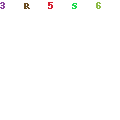I thought that the quotes I had flagged in my copies of Anne of Green Gables and Anne of Avonlea were to no purpose. But now that I’ve got them written on the same page, I see they have a theme after all: Contentment.
“The ice cream was delicious, Marilla, and it was so lovely and dissipated to be sitting there eating it at eleven o’clock at night. Diana said she believed she was born for city life. Miss Barry asked me what my opinion was, but I said I would have to think it over very seriously before I could tell her what I really though. So I thought it over after I went to bed. That is the best time to think things out. And I came to the conclusion, Marilla, that I wasn’t born for city life and that I was glad of it. It’s nice to be eating ice cream at brilliant restaurants at eleven o’clock at night once in awhile; but as a regular thing I’d rather be in the east gable at eleven, sound asleep, but kind of knowing even in my sleep that the stars were shining outside and that the wind was blowing in the firs across the brook.”
~Anne Shirley, in Anne of Green Gables by L.M. Montgomery
I think I agree. I do so love having a variety of experiences–but for everyday life, I’d really much rather be Rebekah of the House of Dreams, watching the sun sink over the lake and then slipping into sleep myself in my own bed.
“Did you see all the diamonds those ladies wore?” sighed Jane. “They were simply dazzling. Wouldn’t you just love to be rich, girls?”
“We are rich,” said Anne staunchly. “Why we have sixteen years to our credit, and we’re happy as queens, and we’ve all got imaginations, more or less….You wouldn’t change into any of those women if you could. Would you want to be that white lace girl and wear a sour look all your life, as if you’d been born turning up your nose at the world? Or the pink lady, kind and nice as she is, so stout and short that you’d really no figure at all? Or even Mrs. Evans, with that sad, sad look in her eyes? She must have been dreadfully unhappy sometime to have such a look. You know you wouldn’t, Jane Andrews!”
“I don’t know–exactly,” said Jane unconvinced. “I think diamonds would comfort a person for a good deal.”
“Well, I don’t want to be any one but myself, even if I go uncomforted by diamonds all my life,” declared Anne. “I’m quite content to be Anne of Green Gables, with my string of pearl beads. I know Matthew gave me as much love with them as ever went with Madame the Pink Lady’s jewels.”
~Anne and Jane, after the Hotel Concert, from Anne of Green Gables
I can sympathize with Jane’s feeling that diamonds must be comforting. I’ve felt that way about wealth myself. I’ve imagined myself not having to work for a living, able to devote myself to the various and sundry interests and cause I care about. But I must come to Anne’s conclusion: I’m quite content to be Rebekah Menter, RD, working-girl. This is a good life that God has made for me, and I am content to be here.
“Do you think you will ever go to college?”
“Oh, I don’t know,” Anne looked dreamily afar to the opal-tinted horizon. “Marilla’s eyes will never be much better than they are now, although we are so thankful to think that they will not get worse. And then there are the twins….somehow I don’t believe their uncle will ever really send for them. Perhaps college may be around the bend in the road, but I haven’t gotten to the bend yet and I don’t think much about it lest I might grow discontented.”
“Well, I should like to see you go to college, Anne; but if you never do, don’t be discontented about it. We make our own lives wherever we are, after all…college can only help us to do it more easily. They are broad or narrow according to what we put into them, not what we get out. Life is rich and full here…everywhere…if we can only learn how to open our whole hearts to its richness and fulness.”
~A conversation between Anne and Mrs. Allan in Anne of Avonlea
I love Mrs. Allan’s dreams for Anne, and how these dreams remind me of the many women I love so much who have encouraged me so much.
“I would like to see you go to college,” Mrs. Allan says, but I should best like that you would be content wherever you are.
In the same way, I feel the blessing and encouragement of dozens of women whenever we speak of my dreams (and even when we don’t speak of them.)
“I would like to see you in your own home, married with children,” they say, “but I would like best to see you content wherever you are.”
And by the grace of God, I am and shall be.

 Don’t forget to take a look at Barbara H’s meme “The Week in Words”, where bloggers collect quotes they’ve read throughout the week–and Carrie’s L.M. Montgomery Reading Challenge to see what everyone else is working on.
Don’t forget to take a look at Barbara H’s meme “The Week in Words”, where bloggers collect quotes they’ve read throughout the week–and Carrie’s L.M. Montgomery Reading Challenge to see what everyone else is working on.


